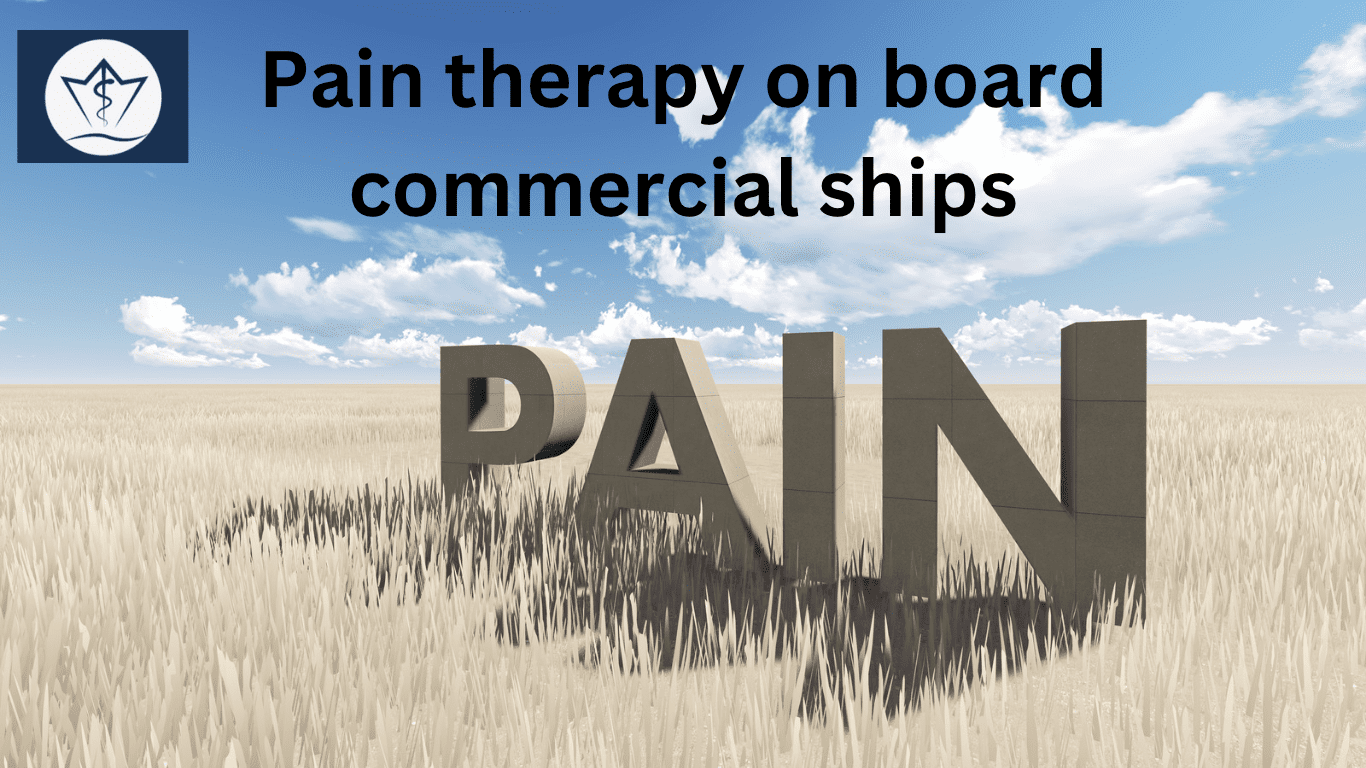Pain therapy principles on commercial ships involve a combination of
strategies aimed at managing and alleviating pain experienced by
individuals while on board. The unique environment and challenges of
being at sea require special considerations in pain management. Here
are some principles that should be followed:
1. Assessment: Thorough assessment of the individual’s pain is crucial.
This includes evaluating the location, intensity, quality, and duration of
the pain. Additionally, identifying any underlying medical conditions or
injuries that may cause or contribute to the pain is essential.
2. Multimodal Approach: Employing a multimodal approach to pain
management involves using a combination of techniques and
interventions to address pain from different angles. This may include
medications, physical therapies, psychological interventions, and
alternative treatments.
3. Medications: Pain-relieving medications may be used to manage
different types and severities of pain. Non-prescription analgesics, such
as acetaminophen, diclofenac, or ibuprofen, can be provided for mild to
moderate pain and should be the first step. For more severe pain,
stronger prescription medications like opioids or tramadol may be
necessary and should not be avoided. The use of opioids should be
initiated after consulting a remote medical consultant only, and careful
monitoring is required due to their potential for addiction and side
effects.
4. Physical Therapies: Physical therapies play a vital role in pain
management. These may include physical exercises, heat or cold
therapy, and various forms of positioning (e.g., during sleep). These
techniques help relieve muscle tension, improve circulation, reduce
inflammation, and promote relaxation.
5. Psychological Interventions: This should be mentioned here for
completeness as it is well-known that even mental conditions have an
impact on pain and its individual consideration, toleration, and
management.
6. Alternative Treatments: Depending on availability and individual
preferences, complementary and alternative therapies may be used.
These can include acupuncture, herbal remedies, aromatherapy, or
relaxation techniques like meditation or yoga. While the evidence for
some of these treatments is limited, they may provide additional pain
relief and improve overall well-being.
7. Education and Support: Providing education and support to individuals
experiencing pain is crucial. This involves explaining the nature of their
pain, discussing treatment options, setting realistic expectations, and
encouraging self-management techniques.
8. Safety Considerations: Pain therapy on commercial ships should
prioritize safety. This includes considering potential interactions between
medications, monitoring for side effects, and ensuring that the individual
is fit to perform their duties while managing pain. Adequate rest periods
and modifications to work duties may be necessary to prevent the
exacerbation of pain.
It’s important to note that pain management should always be
supervised by qualified medical professionals who can tailor the
treatment to individual needs and ensure the safety and well-being of
crew members on commercial ships. If you want to learn more about how
we handle this – get in contact with us at: info@marinemedical.solutions
